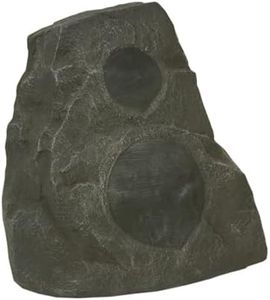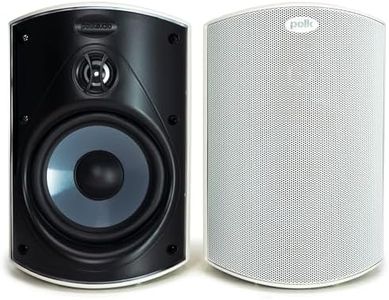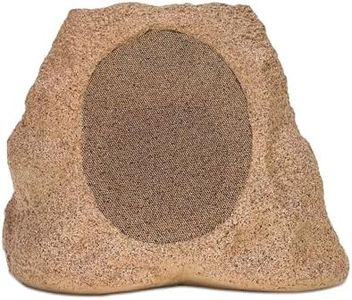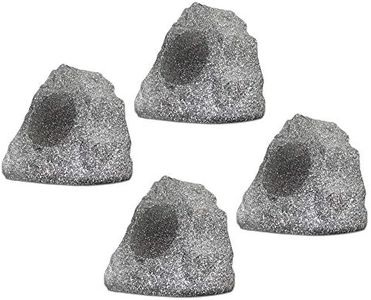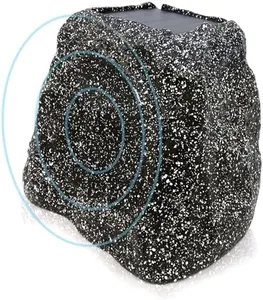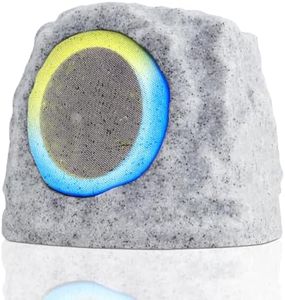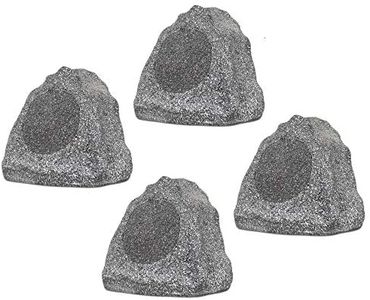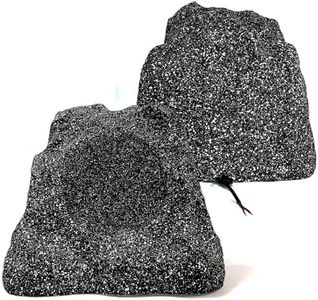We Use CookiesWe use cookies to enhance the security, performance,
functionality and for analytical and promotional activities. By continuing to browse this site you
are agreeing to our privacy policy
10 Best Outdoor Rock Speakers
From leading brands and best sellers available on the web.Buying Guide for the Best Outdoor Rock Speakers
Choosing outdoor rock speakers is all about finding the right balance between sound quality, weather resistance, and blending in with your outdoor space. These speakers are designed to look like rocks, making them perfect for gardens, patios, or poolsides where you want good sound without disrupting the natural scenery. To make a smart choice, it's important to focus on how the key features align with your outdoor area and listening preferences.Weather ResistanceWeather resistance refers to how well the speakers can handle outdoor elements like rain, sun, dust, and extreme temperatures. This is crucial because outdoor speakers are constantly exposed to the environment. Most products are rated for water and dust resistance, commonly indicated by an IP rating. A higher IP rating means more protection, with two numbers indicating resistance to solids and liquids. For most outdoor uses, an IPX4 rating (splash resistant) is a basic minimum, while IPX6 or higher (waterproof and dustproof) gives better protection. If your speakers will be by the pool or in an exposed location, go for higher ratings. If they're under a covered patio, mid-level ratings can suffice.
Sound Quality and PowerSound quality and power determine how clear and loud the music is. This can be measured in watts (W), where higher wattage often means louder sound, and in frequency response (Hz–kHz), which affects sound clarity. For small gardens or patios, lower wattages (10-30W) often suffice, delivering pleasant background music. For larger yards or if you want to host parties with louder music, higher wattages (40W and above) are better. Think about your main use: casual background tunes need less power, while filling a big space or overcoming lots of background noise benefits from more powerful speakers.
Connectivity (Wired vs. Wireless)Connectivity is about how the speakers receive audio—either through wires (wired) or wireless connections like Bluetooth. Wired speakers generally provide more reliable connections and sometimes better sound quality, but they need to be connected to an amplifier or receiver with speaker cables, which might require some setup. Wireless speakers offer easier installation since they just need power and connect to your device via Bluetooth, but can be subject to signal dropouts or battery considerations. If you value easy installation and moving the speakers, go wireless. If you prefer the best and most stable sound quality, go wired, especially if you’re setting up a permanent entertainment area.
Camouflage and DesignCamouflage and design concern how well the speakers blend with your landscape. Rock speakers come in different shapes, sizes, and colors, meant to mimic actual stones. Choosing a design that matches your garden or patio decor is important for aesthetics and for preventing theft or tampering. Lighter colors work better in gardens with light-colored stones; darker ones fit in wooded or shaded environments. Consider the size as well—larger speakers might be more noticeable but can house larger drivers for better sound. Pick the color and shape that will blend in best, based on where you’ll set them up.
Installation and PlacementInstallation and placement are about how easy it is to set up the speakers and where they’ll work best for sound. Some speakers can simply be placed on the ground, while others have specific cabling or mounting needs. The right position can make a difference in how sound carries—aiming towards seating areas or spreading them around evenly helps provide balanced sound. For small patios, one or two speakers may be enough; for larger areas, more units and careful placement avoid dead spots. Choose speakers that match your willingness to install, and always think about how their placement will impact how you hear music in your space.
